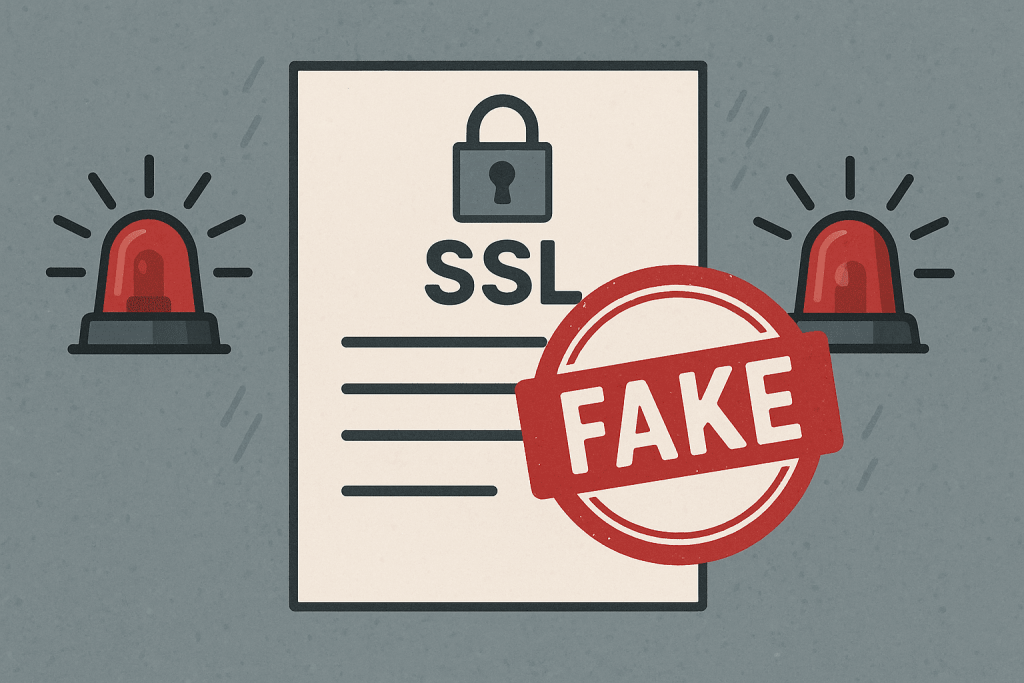
An SSL certificate is more than just a file with keys — it’s proof of your reputation as a website owner. It confirms that you control your domain and ensures that all data exchanged between the user and your server is securely encrypted. However, even if the certificate is installed and the connection shows the “lock” icon, that doesn’t automatically mean everything is safe. Attackers can create fake certificates, replace them during the connection process, or even use stolen keys. In such cases, visitors may see a “secure” site that actually runs on someone else’s server. That’s why it’s essential to know how to verify the authenticity and integrity of your own SSL certificate.
Why It’s Important to Ensure Your Certificate Isn’t Fake
An SSL certificate contains a public key that matches your private key stored on the server. If that private key falls into the wrong hands, anyone could create a copy of your certificate or forge a connection. This opens the door to Man-in-the-Middle (MITM) attacks — when users think they’re connecting to your website but are actually connected to a fake server intercepting their data. In such cases, even a valid domain and HTTPS won’t protect you. Verifying the authenticity of your certificate is not a formality — it’s about maintaining full control over your infrastructure.
How to Check That Your Certificate Is the Correct One
Start with the basics — view the data of the certificate installed on your server and compare it to the one you received from your Certificate Authority (CA). In the command line, you can do this using:
openssl s_client -connect your_domain:443 -showcerts
This command displays the current certificate visible to the outside world. You can compare its fingerprint or serial number with the original certificate file (.crt) you saved after issuance. If they don’t match, it might mean the certificate or web server configuration was replaced.
It’s equally important to verify the trust chain. Your certificate must be signed by an intermediate or root certificate from your CA (e.g., Sectigo, DigiCert, Let’s Encrypt). If someone replaced the intermediate certificate or added their own, browsers might not show an error, but the chain of trust would be broken. You can check this using SSL Labs or tools in your server control panel.
How to Make Sure Your Private Key Hasn’t Been Compromised
The most critical element of the SSL pair is the private key, which must never leave your server. If it’s stored in plain text or accessible to other system users, it can be compromised. In that case, even a valid certificate can be used on another server — effectively cloning your website. To ensure everything is safe, check the permissions of the private key directory (usually /etc/ssl/private/) — only the root user should have access.
You should also verify that your certificate hasn’t been revoked by the Certificate Authority itself. This can be done using OCSP or CRL — services that check the status of certificates. In the command line, it can be executed as follows:
openssl ocsp -issuer chain.pem -cert your_certificate.crt -url http://ocsp.ca.com
If the CA marks your certificate as revoked, it means the key is no longer secure, and you must issue a new one.
Signs That Your Certificate Might Have Been Replaced
If your site suddenly shows a different Certificate Authority, the certificate’s validity period changes, or the fingerprint differs without any updates on your part — it’s a red flag. Such replacement could occur due to a server breach, faulty automatic renewal, or a MITM attack. In corporate networks, attackers can even imitate an internal certification authority to intercept HTTPS traffic. If you suspect something is wrong, check your web server logs for certificate changes and use independent SSL monitoring services — they’ll alert you if your domain’s certificate has been swapped.
How to Ensure Maximum Authenticity and Security
Authenticity starts with proper process management. Store all keys and certificate files separately, make encrypted backups, and never share them with third parties. If you use automatic renewal, make sure Let’s Encrypt or Certbot scripts run only under your control. It’s also wise to set up SSL change monitoring — specialized services can check your domain’s fingerprint daily and notify you of any changes.
Remember: even the most advanced certificate can’t guarantee safety if your private key isn’t under your control. Regular checks, audits, and monitoring are part of good cybersecurity hygiene for any website owner. At Server.UA, you can obtain certificates only from trusted certification authorities and set up verification directly through your control panel — so you can always be sure your SSL is genuine, protected, and belongs only to you.

Leave a Reply